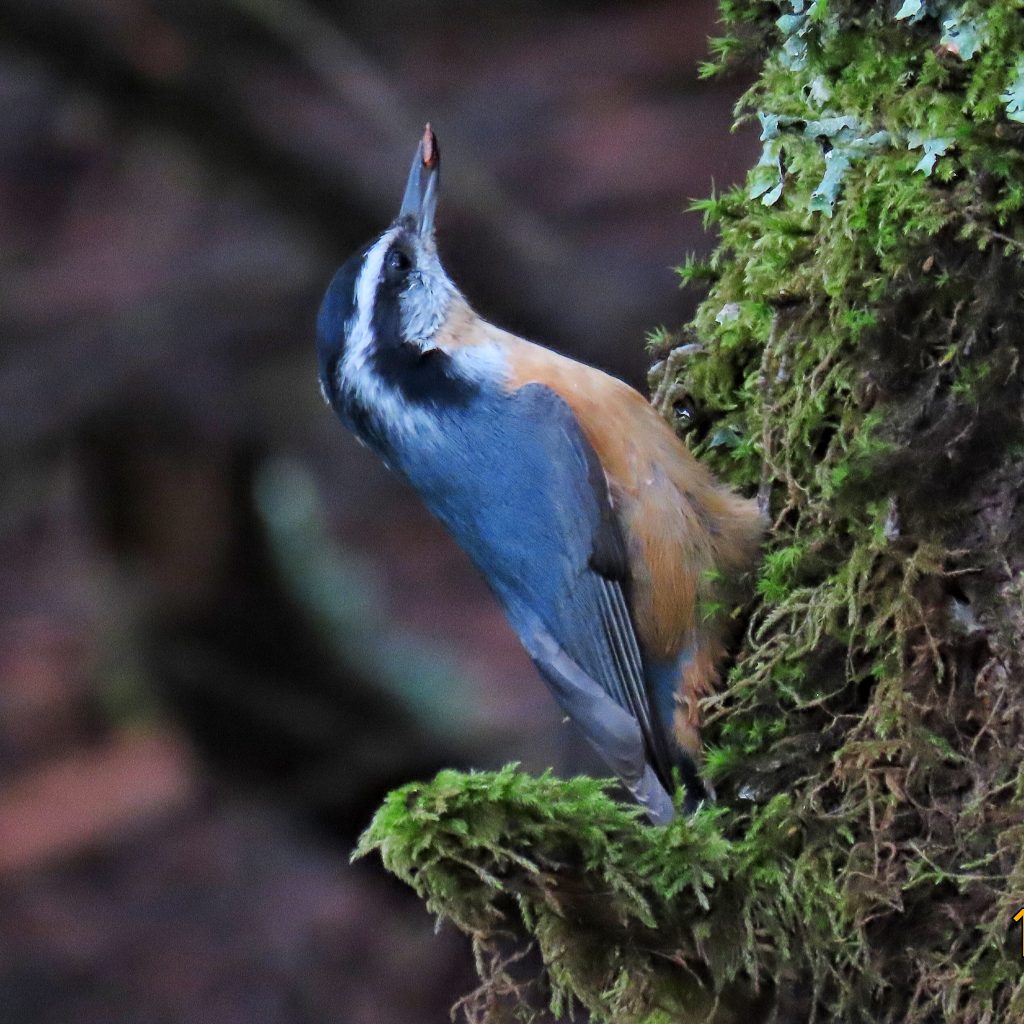
I love these little birds, but I have struggled mightily to get decent photos of these frenetic little creatures. Finally, 17 months ago in my sister-in-law’s yard, I found a very well fed and fairly tame (it will take seeds from her hand) Red-breasted Nuthatch that slowed down long enough to give me a few shots. Then today, many, many photos of bluish grey blurs, and tree trunks and branches formerly inhabited by a nuthatch, later, I found one that bounced around a small enough area so that, by dint of taking 34 shots, I managed to get these 5 acceptable, but not great, photos.
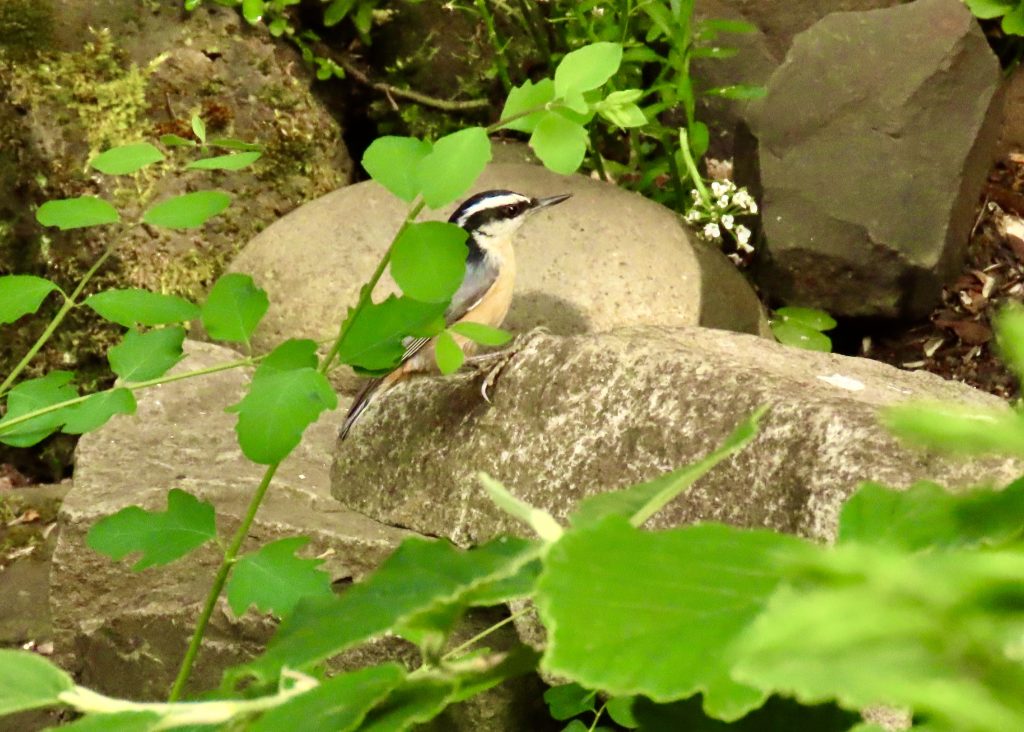
It’s always fun to just watch these birds doing that headfirst nuthatch plunge down a tree trunk. Nuthatches accomplish this by using the rear talon to grip the bark while the forward leg acts as a brace, while the beak is constantly probing and the eyes are always searching. In winter woods they can often be found digging seeds out of conifer cones. They aren’t migratory, per se, but move around a lot in search of food, and periodic irruptions do occur, with many of those birds heading south in search of food and less competition.
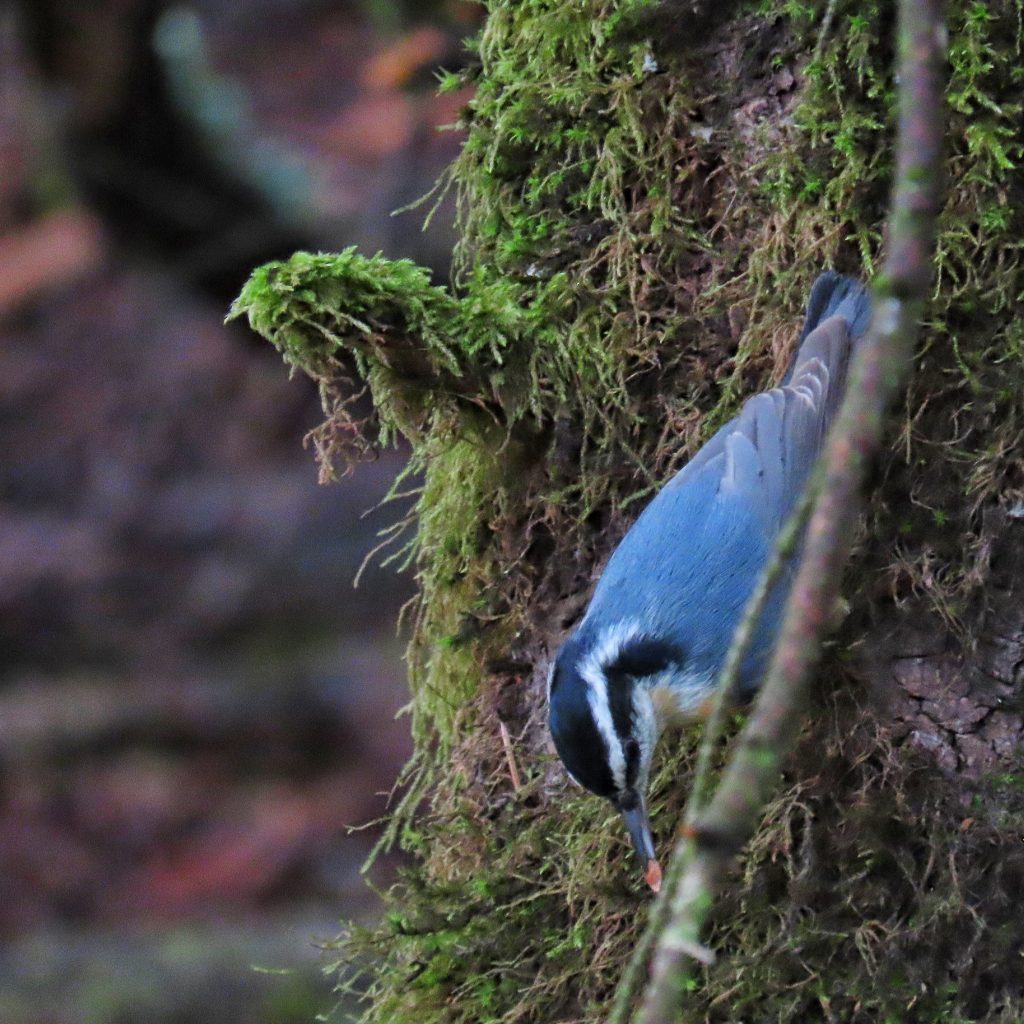
Red-breasted Nuthatches don’t excavate nesting sites, preferring to clean out knotholes and old woodpecker dens for their purposes. They have an interesting habit of smearing pitch around the opening to their nest, which traps bugs for food, and may provide a defense against intruders.
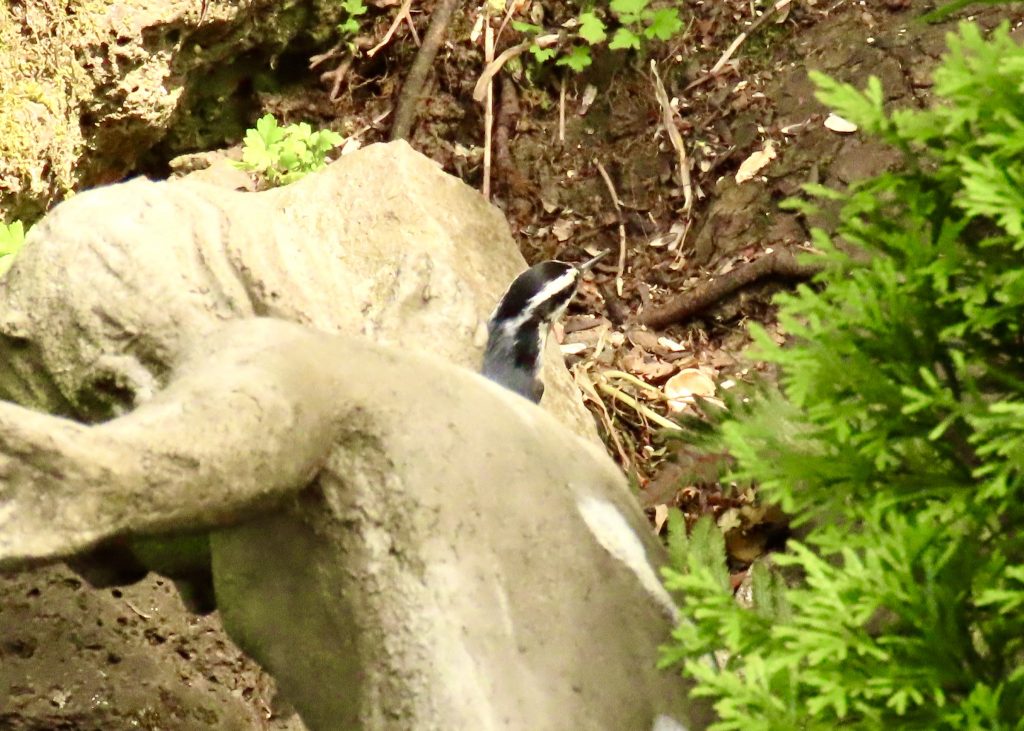
Description– Small (4.5”), stocky bird, with a black line running through the eye on a white face, a black cap on males and a dark grey cap on females, an orange breast and belly, a stubby tail, and blue grey wings and back. Their beak is the same color as their back, sturdy, pointed, and fairly long.
Similar species– Other nuthatches do not have black line through the eye. Black throated Grey Warbler has black throat and breast, and shorter, thinner beak. Mountain Chickadee has black throat and a much stubbier beak.
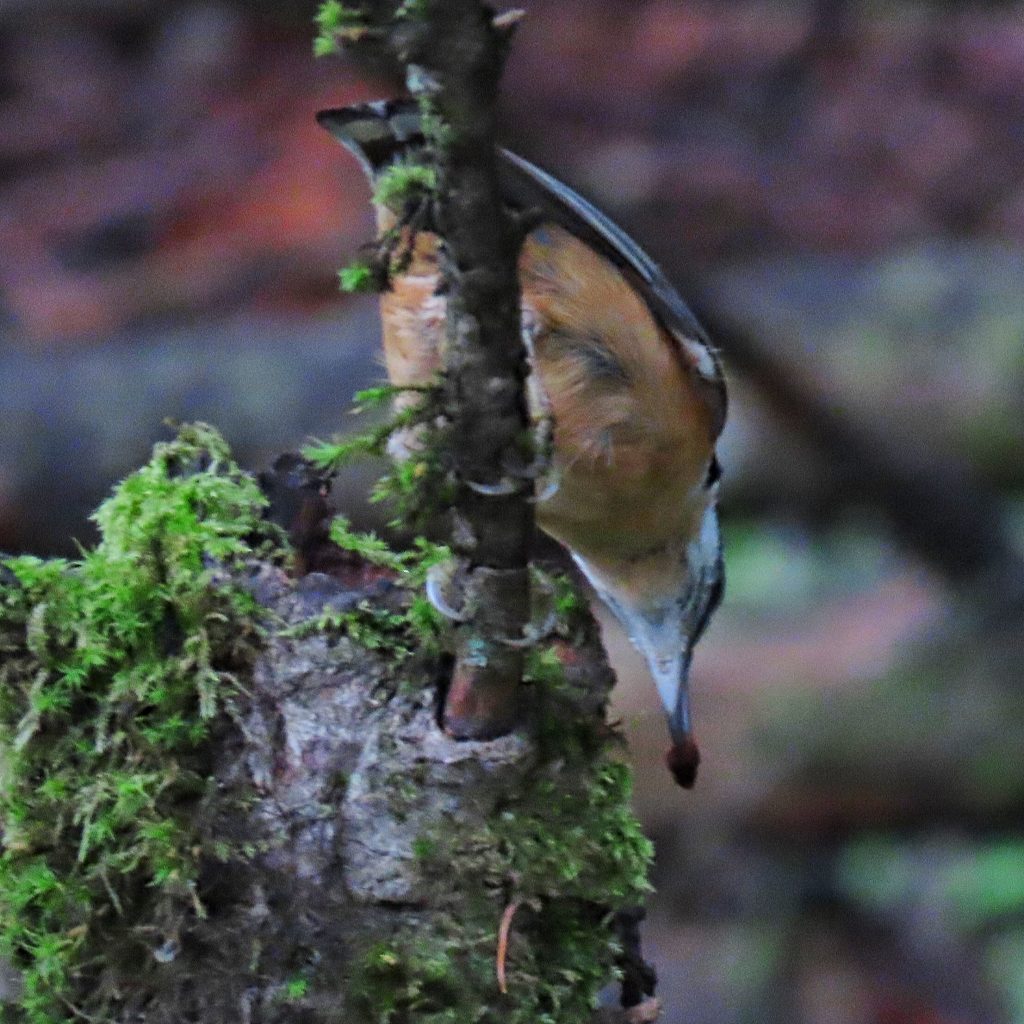
Habitat– Coniferous forests and mixed deciduous forests and woodlands.
Range-Region wide in forests and woodlands.
Eats– Insects and seeds. Often comes to suet and seed feeders.
Adults active– Year around
Etymology of names– Nuthatch comes from Old English ‘nuthak’ from these birds habit of wedging a seed into a crevice and hacking it open with repeated blows from their beak. Sitta comes from the Greek sitte, which was their word for the nuthatches. I can’t ascertain this for certain, but the epithet canadensis probably refers to the fact that this species breeds mostly in the north or at higher elevations.
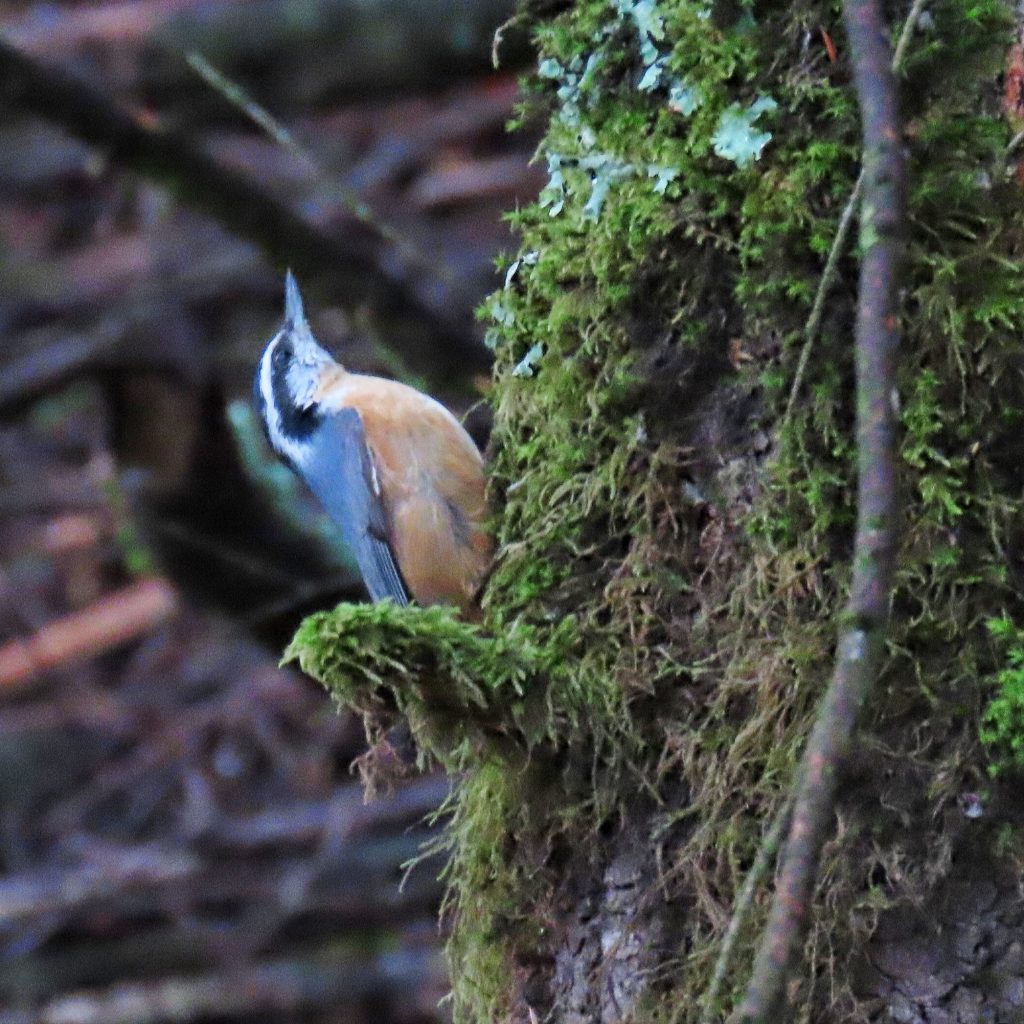
http://www.birdweb.org/birdweb/bird/red-breasted_nuthatch
https://www.allaboutbirds.org/guide/Red-breasted_Nuthatch/overview
https://www.audubon.org/field-guide/bird/red-breasted-nuthatch
https://ebird.org/species/rebnut
https://www.nationalgeographic.com/animals/birds/r/red-breasted-nuthatch/
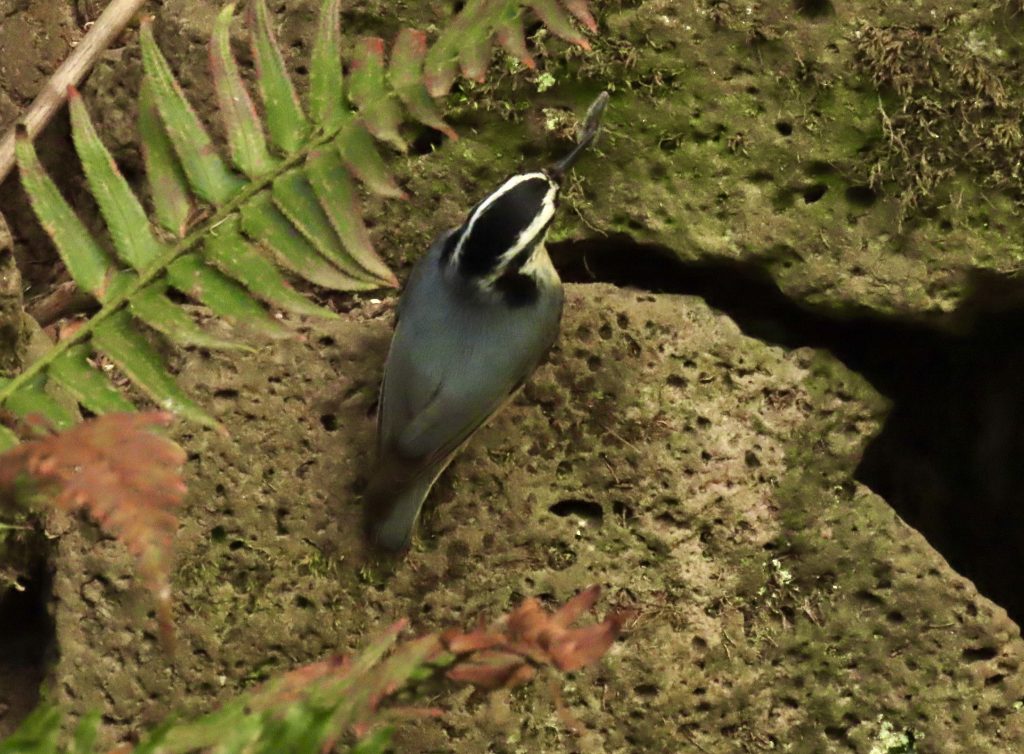
They are so pretty – and hard to get good photos, I agree. Even though he’s partly covered by a leaf, that photo is just lovely.
Love these pics!! Such a beautiful bird!! 👍☺️